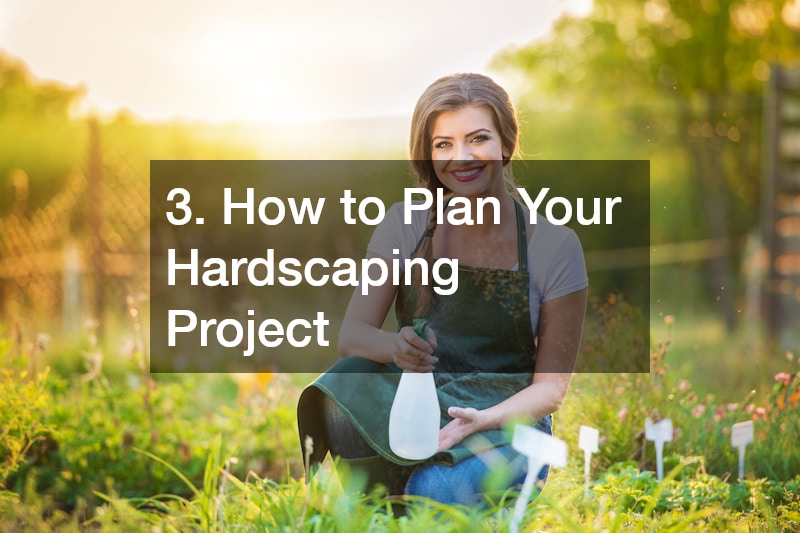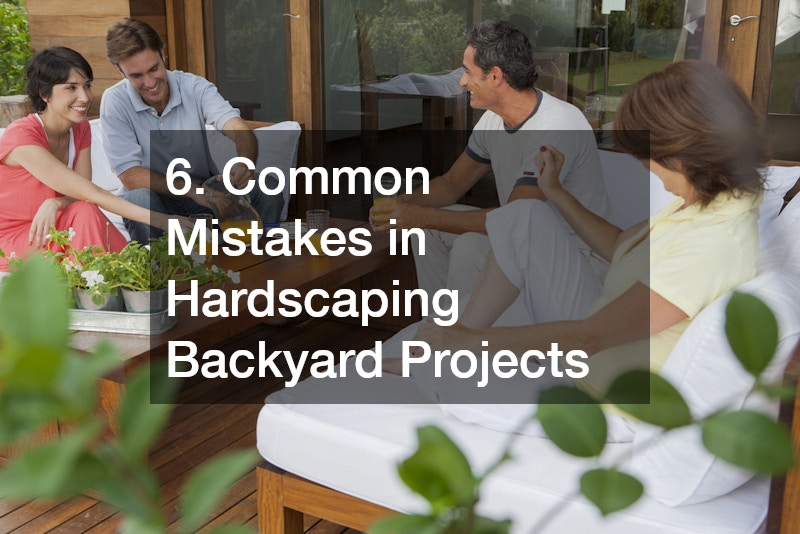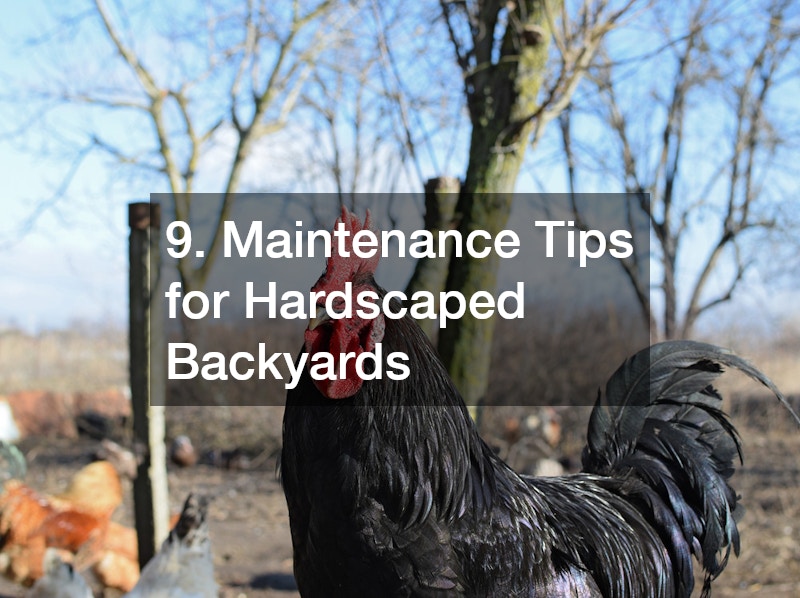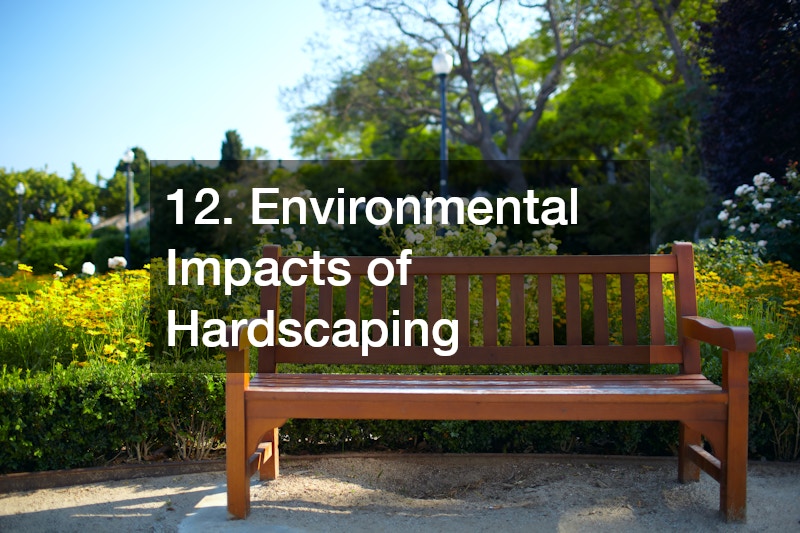Hardscaping your backyard offers a transformative way to expand your living space and add lasting value to your home. Unlike traditional landscaping, hardscaping creates a foundation that can withstand the elements and requires minimal maintenance, making it a wise investment. It serves as the framework for outdoor features and is essential in shaping a cohesive and functional backyard. This guide walks you through essential aspects of hardscaping to help you plan your project.
1. What is Hardscaping in Backyard Construction?
Hardscaping in backyard construction involves the use of solid, permanent features to define your outdoor area. Unlike landscaping, which relies on plants and greenery, hardscaping emphasizes elements such as stone, concrete, and brick to create structured spaces. These elements add depth and functionality to your yard, allowing you to design areas for activities, such as entertaining, cooking, and relaxing. An experienced asphalt contractor can help establish durable surfaces like pathways and patios that improve your backyard’s layout and accessibility.
For those new to backyard construction, understanding the difference between hardscaping and landscaping is crucial. Hardscaping lays the foundation, creating the “bones” of your outdoor area, while landscaping adds the “flesh” through greenery and color. By working with skilled contractors, such as an asphalt contractor, you can ensure your hardscape not only stands the test of time but also aligns with your home’s aesthetic and practical needs.
2. Benefits of Hardscaping Your Backyard
Hardscaping offers numerous benefits, one of the most valuable being its ability to reduce maintenance demands. Unlike lawns and flower beds, hardscape elements like stone paths, retaining walls, and patios require little upkeep, allowing you to spend more time enjoying your yard and less time maintaining it. These elements are also highly durable, able to withstand changing weather conditions, which makes them an excellent long-term investment for homeowners looking to add value to their property.
Additionally, hardscaping enhances your outdoor space’s functionality. By installing specific features, such as seating walls or fire pits, you create designated areas that encourage various activities and gatherings. Hardscaping can also improve the flow of your yard by guiding pathways and adding visual interest through textures and layers. With the right hardscape elements, you can turn even a small yard into a multi-purpose, enjoyable retreat.
3. How to Plan Your Hardscaping Project

A successful hardscaping project begins with careful planning, as even minor decisions impact the final result. Start by defining the purpose of your hardscape; consider whether you want a space for entertainment, relaxation, or even gardening. Budgeting is another crucial step, as hardscaping projects can vary significantly in cost. Options like land loans may provide flexible financing, especially for extensive projects or property renovations, ensuring you have the resources to bring your vision to life.
Sketching your layout is essential for creating a balanced and functional design. This stage allows you to experiment with different layouts and materials, giving you a clearer vision of the final product. Consult with contractors and designers to see which options work best within your budget and space constraints. With proper planning, your hardscape project can seamlessly integrate with your landscape and meet your lifestyle needs.
4. Key Materials Used in Backyard Hardscaping
Choosing the right materials for hardscaping is fundamental to achieving the aesthetic and durability you want. Common materials include stone, concrete, brick, and wood, each offering unique benefits. For example, stone is both attractive and durable, while concrete can be molded into various shapes and finishes. Retaining walls, often made of stone or concrete, provide essential structural support on sloped terrains, helping prevent soil erosion and adding dimension to your backyard design.
Materials should be selected based on your yard’s needs and your project goals. Retaining walls are a popular choice for backyards with uneven terrain, as they add functionality and enhance visual appeal. Consulting with a professional can help you choose the best materials to ensure longevity, stability, and alignment with your overall design. Quality materials provide the foundation for a hardscape that not only looks good but also withstands the elements for years.
5. How to Design a Functional Hardscape Layout
Designing a functional layout is all about creating a flow that complements your outdoor activities. Consider how you want to use your space and arrange elements like seating areas, pathways, and cooking spaces to accommodate these activities. A well-thought-out layout enhances accessibility, making it easy to move from one part of the yard to another without interruption. Keep in mind factors like sun exposure, shading, and proximity to your home when planning high-use areas like patios or dining spaces.
Balance is key in hardscape design; too many elements can make your space feel cluttered, while too few may leave it feeling bare. Think about incorporating open spaces as well as focal points to add interest without overwhelming the area. Working with a landscape designer or architect can provide fresh insights into your layout and help you develop a plan that maximizes your yard’s potential.
6. Common Mistakes in Hardscaping Backyard Projects

One of the most common mistakes in hardscaping is underestimating the project’s scope and not preparing adequately for the waste removal involved. When demolishing old structures or clearing land, a dumpster rental is essential to keep the site organized and efficient. Overlooking this detail can lead to cluttered spaces, creating safety hazards and slowing down progress on your project.
Another frequent issue is neglecting proper drainage, which can cause serious damage to your hardscape. Without proper planning, water can accumulate around structures, leading to erosion or foundation issues over time. Drainage considerations should be incorporated into the early stages of your project to avoid costly repairs later on. Avoid these common mistakes by planning thoroughly and consulting professionals to guide you through the process.
7. How to Choose the Right Hardscaping Contractor
Selecting the right hardscaping contractor is critical to achieving a durable and visually appealing result. A contractor with experience in specialized techniques, like concrete blasting, can provide the expertise needed to create precise and lasting features. Look for contractors who have a solid portfolio and can offer insights into the materials and designs that will work best in your environment.
It’s also important to verify the contractor’s credentials and check for licenses and insurance. This ensures you’re working with a legitimate business and provides protection against potential mishaps. Taking the time to vet contractors can save you from unexpected issues and provide peace of mind as you move forward with your project.
8. Cost Considerations for Backyard Hardscaping
The cost of hardscaping projects can vary widely depending on materials, labor, and the project’s complexity. Stone, for instance, tends to be more expensive than concrete but offers a more natural look. To stay within budget, consider rock crushing equipment rentals, which allow you to produce your own gravel and save on material costs. Renting equipment can provide a budget-friendly option for those who need large amounts of crushed stone for their design.
To avoid budget overruns, get multiple estimates from contractors and factor in unexpected expenses. Elements like lighting, drainage, and landscaping may increase costs, so it’s essential to account for all potential expenses upfront. Being financially prepared allows you to make informed decisions without compromising on quality.
9. Maintenance Tips for Hardscaped Backyards

Once your hardscape is complete, regular maintenance will ensure it remains in top condition for years to come. Sweeping and power washing are simple ways to keep surfaces clean and prevent stains. If your hardscape includes a patio, consider extending your roof or adding a pergola to protect it from the elements. Roofing options not only add shade but can also shield surfaces from weathering, prolonging the lifespan of your materials.
Sealing concrete and stone features can also enhance their durability, helping prevent cracks and discoloration. A maintenance routine that includes occasional resealing and prompt repairs will help your hardscape retain its visual appeal and functional integrity. With proper care, your hardscaped backyard can remain an attractive and functional space.
10. Integrating Hardscaping with Landscaping
Integrating hardscaping and landscaping is the key to creating a cohesive, inviting outdoor space. While hardscaping provides structure, landscaping softens it by adding color, texture, and movement through plants, flowers, and trees. When combined thoughtfully, these elements create a balance that makes the space feel both functional and natural. For example, surrounding a stone patio with lush greenery or incorporating plant beds around walkways can bring a soft, organic contrast to the structured look of hardscaped areas.
The integration of these two elements also requires a focus on climate and plant choice. Selecting low-maintenance plants that thrive in your area can reduce the upkeep needed to keep the space looking vibrant year-round. Moreover, using native plants not only enhances the landscape but also supports local ecosystems. Blending plants with structural elements can create a backyard that feels connected to the environment while providing designated areas for relaxation and recreation.
11. Popular Hardscaping Features for Backyards
Many homeowners are choosing to enhance their backyards with popular hardscaping features like fire pits, outdoor kitchens, and water features. Fire pits are a favorite for creating a warm, social space that can be used throughout the year, while outdoor kitchens add both convenience and value for those who enjoy outdoor dining. For homeowners interested in garden cultivation, commercial greenhouse builders offer tailored greenhouses that integrate seamlessly with hardscaped areas, providing a designated area for plants and herbs.
Another rising trend is the use of pergolas and seating walls, which add structure and definition to the yard. Pergolas provide shade and can serve as a focal point for seating areas, enhancing the ambiance of your outdoor space. Seating walls, made from stone or brick, are both decorative and functional, providing permanent seating options around patios or fire pits. These features, when thoughtfully designed, make the yard a more versatile and enjoyable place.
12. Environmental Impacts of Hardscaping

While hardscaping adds beauty and durability to your backyard, it can also impact the environment if not planned with care. Impermeable surfaces like concrete and stone prevent water from naturally soaking into the ground, which can contribute to issues like groundwater contamination if proper drainage is not in place. To mitigate this, many homeowners are opting for eco-friendly hardscaping materials, such as permeable pavers, which allow rainwater to filter into the soil, reducing runoff and supporting local water systems.
Another environmental consideration is the potential disruption to local ecosystems during construction. For instance, removing too much soil or vegetation can affect the habitats of insects, birds, and small animals. Sustainable landscaping practices, like retaining natural elements where possible and choosing native plants, can help minimize environmental impact. By considering these factors, you can create a hardscape that is not only beautiful and functional but also environmentally responsible.
13. How to Incorporate Water Features in Hardscaping
Adding water features to your hardscape can bring a sense of tranquility and visual appeal. Water features such as fountains, ponds, or waterfalls can serve as focal points, drawing attention and adding a calming ambiance. Small, recirculating water fountains are ideal for compact spaces, while larger backyards might accommodate ponds or cascading waterfalls for a more dramatic effect. With the proper design, a water feature can also support local wildlife, attracting birds, butterflies, and beneficial insects.
Placement is essential when adding water features to ensure that they integrate well with other hardscaped elements. Consider proximity to seating areas or patios to enhance the relaxation experience, or locate them near garden beds to provide plants with humidity and moisture. Combining water features with plants and stones can create a naturalistic feel that brings a sense of serenity to your outdoor space. When installed and maintained properly, water features can become a beloved part of your backyard.
14. Future Trends in Hardscaping for Backyard Spaces
Future hardscaping trends point toward the integration of modern technology and eco-friendly solutions in backyard spaces. Custom home builders are increasingly incorporating outdoor living spaces into their designs, blending indoor and outdoor areas with features like retractable glass walls or covered patios. This shift reflects a growing desire for spaces that allow people to connect with nature without sacrificing modern conveniences or comfort. Advanced lighting solutions, such as LED systems with customizable settings, are also becoming popular, allowing homeowners to create ambiance with energy-efficient technology.
Sustainability is another significant trend in hardscaping, with a focus on materials and designs that support environmental health. Permeable pavers, recycled materials, and low-maintenance plants are becoming staples in eco-conscious hardscape design. Homeowners are also showing interest in drought-tolerant landscaping and water-efficient irrigation systems. As awareness of environmental issues grows, future hardscaping will likely prioritize designs that reduce ecological footprints while providing long-lasting, beautiful outdoor spaces.
Investing in a hardscaped backyard is a rewarding way to add long-lasting beauty and functionality to your outdoor space. By carefully planning each stage, from design to materials, you create a cohesive environment that fits your lifestyle and aesthetic goals. Hardscaping isn’t just about transforming your yard; it’s about enhancing your quality of life. A well-designed hardscape can serve as an extension of your home, offering areas to entertain, relax, and connect with nature. With thoughtful planning and an eye on future trends, you can build a backyard that not only adds value to your property but also becomes a cherished part of your daily life.
